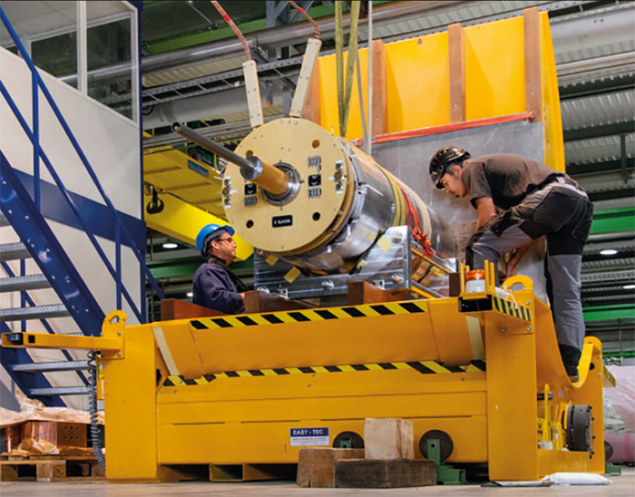
Image credit: Maximilien Brice.
On 19 September, the European Investment Bank (EIB) signed a 250 million Swiss francs (€230 million) credit facility with CERN in order to finance the High-Luminosity Large Hadron Collider (HL-LHC) project. The finance contract follows recent approval from CERN Council, and will allow CERN to carry out the work necessary for the HL-LHC within a constant CERN budget.
The HL-LHC is expected to produce data from 2026 onwards, with the overall goal of increasing the integrated luminosity recorded by the LHC by a factor 10. Following approval of the HL-LHC as a priority project in the European Strategy Report for Particle Physics, this major upgrade is now gathering speed together with companion upgrade programmes of the LHC injectors and detectors. Engineers are currently putting the finishing touches to a full working model of an HL-LHC quadrupole, which will eventually be installed in the insertion regions close to the ATLAS and CMS experiments in order to focus the HL-LHC beam. Built in partnership with Fermilab, the magnets are based on an innovative niobium-tin superconductor (Nb3Sn) that can produce higher magnetic fields than the niobium-titanium magnets used in the LHC.
The contract signed between CERN and EIB falls under the InnovFin Large Projects facility, which is part of the new generation of financial instruments developed and supported under the European Union’s Horizon 2020 scheme. It’s the second EIB financing for CERN, following a loan of €300 million in 2002 for the LHC. “This loan under Horizon 2020, the EU’s research-funding programme, will help keep CERN and Europe at the forefront of particle-physics research,” says the European commissioner for research, science and innovation, Carlos Moedas. “It’s an example of how EU funding helps extend frontiers of human knowledge.”







